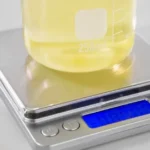The digital design world has seen significant advancements, thanks in part to emerging technologies that bring new tools, textures, and solutions to the table. Among these advancements, the 1.5f8-p1uzt texture is gaining attention for its ability to elevate design work in several industries. From virtual reality (VR) to 3D modeling, its versatility and effectiveness are reshaping how digital environments are created and experienced.
This article offers an ultimate guide to understanding and using the 1.5f8-p1uzt texture, covering everything from its features and applications to its impact on businesses and digital design projects. Whether you’re a professional or an enthusiast in the field of digital marketing, texture design, or even procurement for small businesses, this article will provide key insights and help unlock the potential of this powerful tool.
What is the 1.5f8-p1uzt Texture?
The 1.5f8-p1uzt texture is a sophisticated digital asset designed to simulate real-world surfaces with incredible accuracy. By offering intricate detailing and realistic visual appeal, it helps bridge the gap between the digital world and tangible reality. This texture is known for its adaptability across various digital design applications, whether in architectural visualizations, gaming, or virtual reality environments.
Its creation stems from the need to provide more lifelike elements in digital environments, enhancing the sense of immersion and realism. The 1.5f8-p1uzt texture takes digital surfaces to a new level, making them appear not only detailed but also responsive to lighting and interactions in dynamic environments.
Applications of the 1.5f8-p1uzt Texture in Digital Design
In recent years, the 1.5f8-p1uzt texture has made a name for itself across several industries, from entertainment to real estate investment. Below are some of the most notable applications of this texture:
Virtual Reality (VR) and Gaming
The 1.5f8-p1uzt texture is a game-changer for virtual reality and gaming. It allows designers to create environments that feel more realistic and immersive, whether players are exploring a digital cityscape or navigating an alien world. The texture’s versatility helps replicate real-life surfaces, giving a tactile quality to digital spaces that enhances the player’s experience.
3D Modeling and Architecture
Architects and 3D modelers benefit from this texture when creating buildings, interiors, and urban environments. By incorporating 1.5f8-p1uzt into their designs, they can simulate the texture of walls, floors, windows, and furniture with incredible accuracy. This boosts both the visual appeal and the realism of their renderings, offering clients a more compelling preview of the final project.
Product Design and Prototyping
In the field of product design, 1.5f8-p1uzt aids in developing prototypes and product renderings with lifelike materials. Designers can use it to simulate different materials such as wood, metal, or plastic, ensuring that prototypes look just like the physical products when viewed in digital form. This is especially beneficial for businesses that are scaling their designs and need to visualize their products before physical production begins.
Automotive and Industrial Design
The automotive and industrial sectors also leverage the 1.5f8-p1uzt texture in designing products with intricate surfaces. It is frequently used in designing interior features such as dashboard panels, seats, and consoles. Moreover, its durability and realistic finish help car manufacturers simulate the user experience of interacting with their vehicles.
How 1.5f8-p1uzt Enhances Digital Realism
One of the primary reasons the 1.5f8-p1uzt texture is gaining traction is its ability to significantly enhance digital realism. It goes beyond typical textures by providing more refined surface details that mimic real-world materials. Here’s how it contributes to more immersive digital experiences:
Detailed Surface Simulation
The texture mimics the natural imperfections and fine details that would be found in real-world materials. These subtle textures create surfaces that appear worn, polished, or weathered, which significantly adds to their realism. The level of detail and the intricacies of the texture play a crucial role in achieving more lifelike renderings and environments.
Realistic Lighting Interaction
Lighting plays a vital role in how textures appear. The 1.5f8-p1uzt texture interacts dynamically with different light sources, which adds depth and dimension to digital designs. Whether it’s sunlight streaming through a window or a dimly lit room, the texture responds accordingly, producing shadows and highlights that enhance the overall look of the digital environment.
Material Simulation
Materials such as metal, stone, fabric, and wood are common in both the physical and digital worlds. The 1.5f8-p1uzt texture can be customized to replicate various materials accurately. This allows designers and creators to simulate how these materials would look and feel in the real world, making virtual environments appear more tangible.
Industries Revolutionized by 1.5f8-p1uzt Texture
The 1.5f8-p1uzt texture is making a significant impact across many sectors, transforming the way businesses approach design and user experience. Here are some of the industries benefiting the most from its integration:
Interior Design and Home Decor
The home and real estate industries have been quick to adopt the 1.5f8-p1uzt texture for creating virtual renderings of interior spaces. Designers can use it to generate highly realistic representations of furniture, flooring, and wall textures, providing clients with a digital preview before committing to any physical changes.
Marketing and Digital Advertising
The texture has also found its place in digital marketing, where it helps create stunning visuals for advertisements, websites, and social media campaigns. Whether showcasing appliances, fashion items, or home décor, the realistic finish of 1.5f8-p1uzt adds an element of sophistication and professionalism to any marketing materials.
Product Manufacturing and Prototyping
Manufacturers use the 1.5f8-p1uzt texture to generate detailed product designs in 3D before moving into physical production. Whether it’s a kitchen appliance or automotive part, the texture allows them to simulate different materials, giving them valuable insights into how their products will look, feel, and perform.
Gaming and Entertainment
In the entertainment industry, gaming and virtual reality environments are revolutionized with the integration of the 1.5f8-p1uzt texture. Whether it’s creating lifelike landscapes, vehicles, or characters, the texture brings realism to game worlds, making them feel more immersive and engaging for players.
Tips for Using 1.5f8-p1uzt Effectively
For those looking to integrate the 1.5f8-p1uzt texture into their work, here are a few tips to get the best results:
Understand the Texture’s Features
Before diving into a project, it’s important to familiarize yourself with the key features of the 1.5f8-p1uzt texture. Take time to explore its specs sheet, and understand how it interacts with different materials and lighting conditions.
Choose the Right Application
This texture’s versatility allows it to be used in a wide range of industries. Whether working on tile projects, product designs, or digital renderings, understanding the intended outcome of the project is crucial in selecting the right application for the texture.
Optimize for Performance
While the 1.5f8-p1uzt texture offers incredible realism, it can also be demanding on system performance. Ensure that your hardware and software are optimized for handling high-quality textures, especially for virtual reality or 3D rendering projects.
Customize for Your Project Needs
The 1.5f8-p1uzt texture is highly customizable, allowing you to adjust aspects like material blending, lighting adjustments, and scaling. Tailoring the texture to suit the specific needs of your project will help you achieve the most lifelike results.
The Future of 1.5f8-p1uzt in Digital Design
The 1.5f8-p1uzt texture is only the beginning of a new era in digital realism. As technology continues to evolve, so too will the capabilities of textures like 1.5f8-p1uzt. With machine learning, AI, and real-time rendering technology improving, the potential for even more sophisticated, dynamic textures is vast.
Expect to see faster rendering times, more interactive features, and even more seamless integrations into VR and AR environments. The role of such textures in creating immersive experiences for users will only grow, helping digital spaces feel even more tangible.
Final Words
The 1.5f8-p1uzt texture is transforming how digital designers, artists, and creators approach realism. Its intricate details, versatility, and ability to enhance user experience make it an invaluable tool for industries ranging from architecture to gaming and product design. As digital environments become more lifelike and immersive, the 1.5f8-p1uzt texture will continue to play a crucial role in shaping the future of digital design.
FAQs:
What is the 1.5f8-p1uzt texture used for?
The 1.5f8-p1uzt texture is used in various industries, including gaming, architecture, and product design, to create realistic, lifelike surfaces and materials in digital designs.
How does the 1.5f8-p1uzt texture enhance digital realism?
The texture provides intricate surface details, interacts dynamically with lighting, and simulates different materials, making digital environments feel more tangible.
Can I use the 1.5f8-p1uzt texture for interior design projects?
Yes, the 1.5f8-p1uzt texture is ideal for interior design projects, offering realistic renderings of surfaces like walls, floors, and furniture.
Is the 1.5f8-p1uzt texture customizable?
Absolutely! The texture is highly customizable, allowing adjustments to scaling, lighting, and material blending to suit specific project needs.
How can the 1.5f8-p1uzt texture improve the performance of my digital design projects?
By using the 1.5f8-p1uzt texture, designers can create highly realistic visuals that engage users, improving the overall user experience and boosting the effectiveness of virtual environments.











